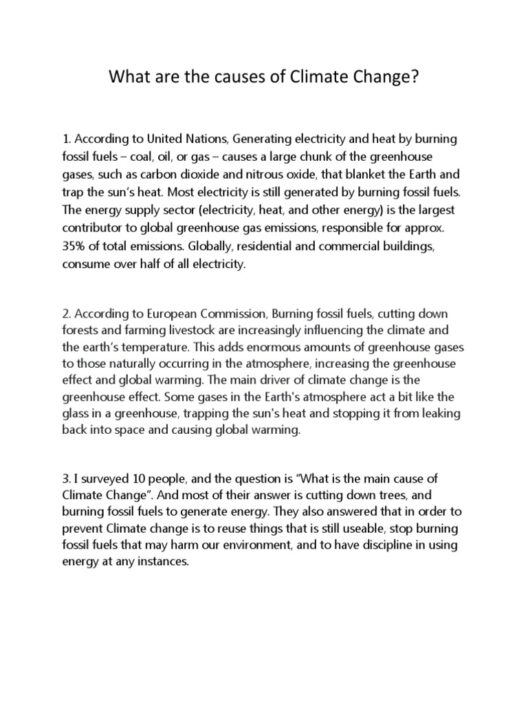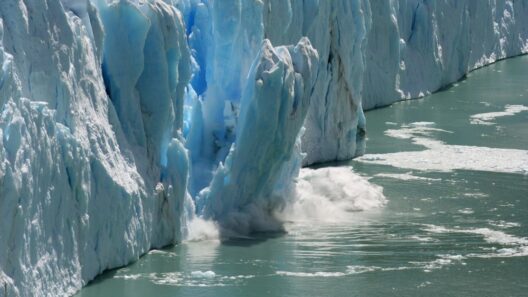As we delve into the intricate tapestry of climate science, one cannot help but ponder: Are we already beyond the point of no return? This query is not merely rhetorical; it encapsulates a growing concern among scientists and environmentalists alike. The notion of reaching an irreversible threshold in global warming is alarming, yet it provides a crucial framework for understanding our planet’s precarious future. What exactly constitutes this “point of no return,” and what challenges do we face in evading it?
Global warming, driven predominantly by anthropogenic emissions of greenhouse gases, disproportionately affects ecological balance. A staggering increase in atmospheric CO2 levels, now exceeding 400 parts per million, radically influences weather patterns, sea levels, and biodiversity. The consensus among climatologists suggests that if global temperatures rise beyond 1.5 degrees Celsius compared to pre-industrial levels, the consequences could be cascading and catastrophic.
But what precisely defines this threshold? The ‘point of no return’ refers to a condition where natural systems transition into irreversible states, primarily due to climate change. These changes can manifest as the melting of polar ice caps, rampant deforestation, or the acidification of oceans. Each of these scenarios presents a potential domino effect where one alteration triggers another, leading to ecological collapse.
Consider, for instance, the Arctic region. The thawing of permafrost releases vast quantities of methane, a potent greenhouse gas far more effective than CO2 at trapping heat. This self-amplifying cycle exemplifies how we might already be skating precariously close to the precipice of irreversible change. What happens if this methane release accelerates uncontrollably? The question demands rigorous inquiry and reflection.
Furthermore, we must explore the concept of tipping points within climate systems. Tipping points are critical thresholds wherein a relatively small change can lead to dramatic consequences. For instance, the collapse of the West Antarctic Ice Sheet could result in several meters of sea-level rise, profoundly affecting coastal cities globally. The implications of such a shift are manifold, as millions could be displaced, ecosystems lost, and economic destabilization ensue.
Yet, it is essential to approach these grave realities not merely with trepidation but with a proactive mindset. The challenge lies in vigilant monitoring and innovative adaptation strategies that align with scientific insights. Climate policies anchored in sustainability, renewable energy, and carbon neutrality present an avenue for mitigating these dire outcomes. However, widespread public participation is paramount. How can individuals contribute to these efforts? What role do societal norms play in shaping environmental policy?
Education emerges as a potent tool in this struggle. By raising awareness about the intricacies of climate dynamics, communities can cultivate informed citizens equipped to navigate and influence policy. Schools, universities, and organizations should act as bastions of knowledge, fostering a generation dedicated to combating climate change. Interactive initiatives, such as tree planting and sustainable farming practices, can galvanize community involvement and awareness.
At the nexus of education and action lies the concept of behavioral economics. Understanding human psychological responses to climate change can illuminate paths toward effective advocacy and engagement. For example, appealing to values of stewardship and intergenerational responsibility can motivate individuals to participate in climate initiatives actively. This shift in mindset can catalyze a broader societal transformation toward sustainability.
The discourse surrounding climate change must also prioritize equity. Historically marginalized communities often experience the brunt of climate impacts. Social justice must be an integral component of climate action, addressing not only environmental degradation but also the socioeconomic disparities exacerbated by climate change. How can society build resilient infrastructures for all demographics while simultaneously addressing climate vulnerabilities?
Internationally, cooperation is indispensable in confronting our most formidable challenges. The Paris Agreement represents a collective aspiration, binding nations to keep global temperature rise well below 2 degrees Celsius. Yet, efficacy hinges on accountability and tangible commitments. Climate agreements are a starting point, but they necessitate robust implementation and compliance mechanisms. Are countries prepared to take responsibility, or will their pledges remain mere platitudes?
As we inch closer to the metaphoric brink of a ‘point of no return,’ technological innovations afford opportunities for rectifying past excesses. Carbon capture and storage (CCS) and advancements in renewable energy technologies hold promise for curbing emissions substantially. The ingenuity displayed in the development of sustainable alternatives will define our trajectory in battling climate change.
However, it is imperative to address skepticism surrounding these technologies. Do they provide a silver bullet, or merely a Band-Aid on a bursting dam? A theocratic belief in technology as salvation without concomitant behavioral changes may lead to disillusionment. It’s vital to strike a balance between reliance on innovative technology and the need for systemic shifts in consumption patterns and governance.
Ultimately, the critical question remains: are we indeed beyond the point of no return? While evidence points toward alarming trends, optimism is not unwarranted. By amplifying our collective voices in advocacy, pressing for equitable policies, and spearheading innovations, we can alter our trajectory. The interplay of human agency and scientific insight offers a flicker of hope amid an otherwise daunting reality; it is a challenge we must embrace, not shy away from.
In conclusion, confronting climate change and its myriad implications requires multifaceted strategies that reconcile urgency with thorough understanding. Are we grievously late to the fight, or do we possess the tenacity to rewrite our future? The answer depends not only on scientific developments but also on our willingness to engage, adapt, and innovate. The time is now to act decisively for the planet we inhabit.





